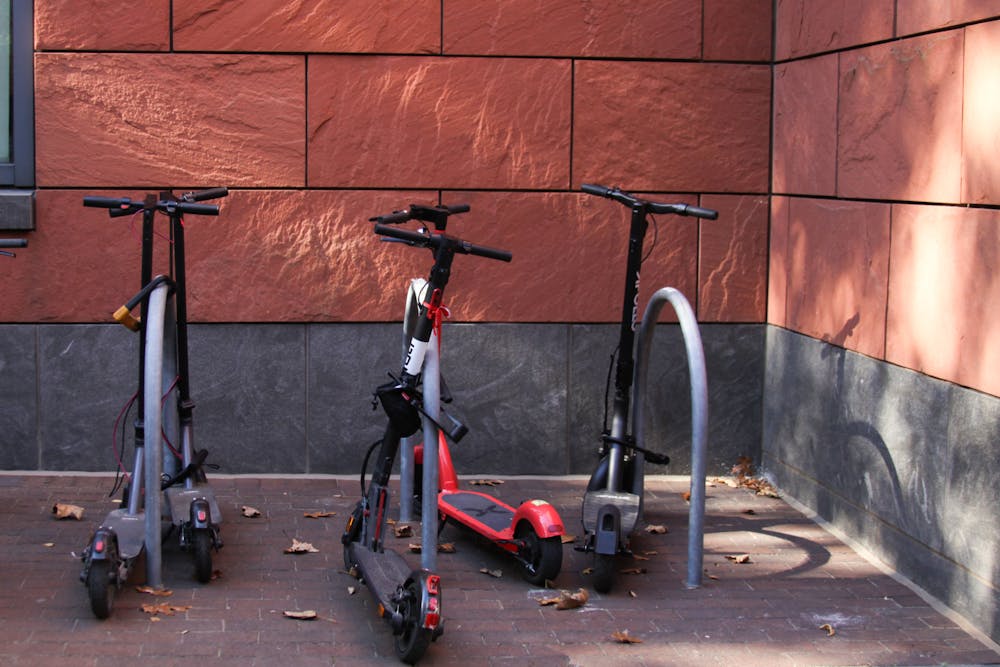On a particularly unfortunate health day, it took me one hour to walk from the McNeil Building to Gregory College House. For reference, Google Maps said it should take eight minutes.
The main issue I encountered was the detour. I knew that walking up the bridge during a flare would be a bad idea; this meant I would have to go around, walking to the crosswalk at Spruce and back. This may seem like a minor inconvenience for some, but it was not so minor at the time. Even going at a snail’s pace, it took everything in me to safely make it back to my dorm room.
I’ve since returned to going about my merry way across the bridge, occasionally complaining about the sheer steepness of it all. However, I’m still acutely aware of how seemingly everyday tasks can pose a challenge for many people. For instance, how difficult is it to go up the bridge in a manual wheelchair? With crutches? Additionally, I know from conversations that many able-bodied students struggle with the bridge as well, especially if they’re tired and/or injured. Even going up the bridge with a big suitcase or a handful of grocery bags presents a challenge.
I often notice that the wheelchair accessible seats at the back of lecture halls are often blocked (nor is it easy to see or hear the professor at the back of the hall), and the power assist entry buttons are broken, to name a few. Addressing these can be an important first step in making sure all students have equitable access to opportunities, whether they be educational, social, etc.
Accessibility is everywhere, and it impacts everyone. There is no hard distinction between accessibility features for disabled people and those for able-bodied people: using elevators to go between floors, writing on computers for essays and school assignments, or even sending text messages to friends benefits everyone, regardless of disability. In fact, much of the technology we use today was intended to be assistive, including typewriters and SMS messages.
Discussions that involve convenience for able-bodied students may have implications that have to do with accessibility for disabled students. For instance, using a wheelchair or other powered mobility aid isn’t too far from using a bicycle or an electric scooter to get to class and other events. Furthermore, although the rules concerning electric scooters and skateboards do not apply to disabled students using mobility aids, it may still be an additional consideration. If you’re ambulatory and can only walk short distances or under certain circumstances, how would you prove that you “need” the mobility device? Would an explanation suffice? A note from a doctor or Disability Services, or perhaps something else?
Improving access to education, workplaces, etc. is a net positive for everyone. Removing barriers to education and workplaces, e.g. by providing reasonable accommodations to those who need them, allows more people to contribute to society and strengthens the economy. Contrary to arguments like Columnist Brett Seaton’s, it is not a privilege nor harmful to benefit from accommodations. Rather, it is a privilege to exist in a system that allows you to succeed without having to advocate for yourself and overcompensate when access is lacking. The belief that accommodations are “extra” and an undue burden on institutions undermines the complex nature of disabilities. It dismisses the capability of disabled individuals to succeed, and overlooks their right to pursue this success.
It is also important to consider that disability is not a permanent identity; occasionally, I will hear stories from students who were temporarily injured and had to utilize some of the same accommodations that disabled students do. They will come across many of the same struggles, finding it difficult to access certain buildings, having to take detours to get to places, and having to rethink many parts of their routine that previously felt simple and did not require a second thought.
SEE MORE FROM JESSEY SHIN:
One in four 20-year-olds today will become disabled long-term before they retire, but the majority of workers estimate that their chance of becoming disabled during their career is only 1-2%. It’s important to understand that most people will experience disability at some point in their lives, demonstrating that accessibility and inclusion have tangible impacts on everyone.
Ultimately, the line between being disabled and non-disabled is not clear, and accessibility can be beneficial to many people down the line. Addressing these concerns, from whether Penn’s campus is wheelchair accessible to making sure that social events are less overwhelming, is something that can benefit everyone, even beyond the intended demographic.
JESSEY SHIN is a College first-year studying sociology and communications from Seongnam-si, South Korea. Their email is jessey0@sas.upenn.edu.









